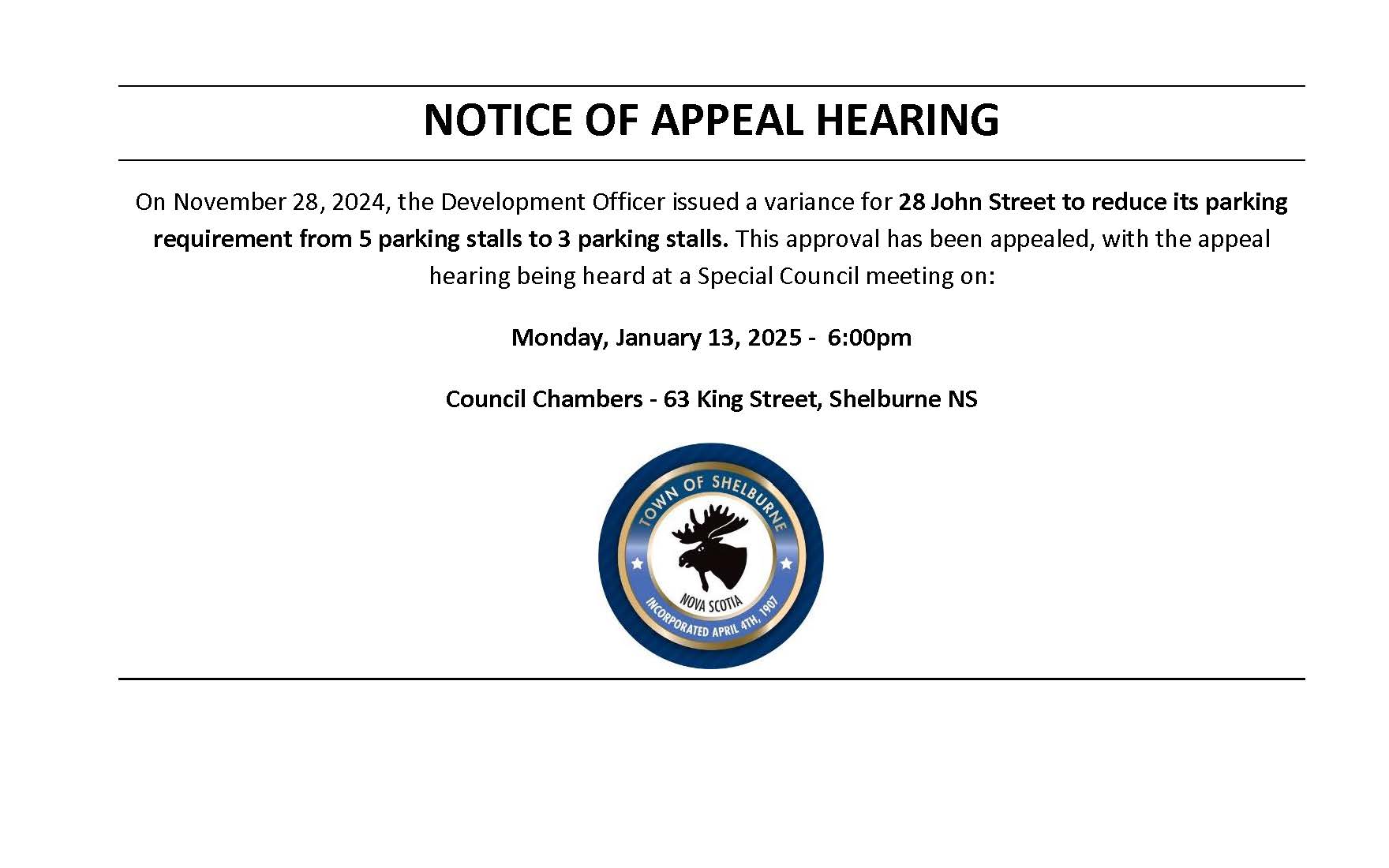News
Community Open House - Roseway Manor
- Details
- Published: Friday, 24 January 2025 09:57

Open House
Thursday January 30th
3:30-5:00
6:30-8:00
Shelburne Community Centre
GRANTS TO ORGANIZATIONS
- Details
- Published: Wednesday, 22 January 2025 09:59

Our Grants to Organization application forms can be found here. Program is open for applications until January 31, 2025.
NOTICE OF PUBLIC HEARING - FEBRUARY 5, 2025 5:30pm
- Details
- Published: Tuesday, 21 January 2025 09:25

Town of Shelburne will be holding a public hearing regarding proposed amendments to the MUNICIPAL PLANNING STRAEGY and LAND USE BYLAW on:
February 5, 2025 - 5:30pm
Council Chambers - 63 King Street, Shelburne NS
Proposed amendments to the Municipal Planning Strategy and Land Use Bylaw include:
- A new Residential – Apartment (R-A) zone: Allowing properties zoned R-A with Town water and sewer to build up to 25 residential units/acre, subject to site plan application and approval criteria, including provision of accessible parking, landscaping and buffering, stormwater management, and local public engagement. Properties to be rezoned R-A include:
- 136 Hammond St. (PID 80146939)
- 182 Clements St. (PIDs 80142656, 80142672, 80142631)
- 118 King Street (PID 82573908)
- 92 King Street (PID 80143639)
- Updated Variance process and criteria for all variances: to allow for local public engagement prior to variance approval, outline application criteria; and new criteria to evaluate variances, and specific criteria for parking variances.
- Adding a property on Ohio Road (PID 80140361) to a map outlining the Commercial Development District.
More information can be found online at shelburnens.ca (see January 20, 2025 Council Package here) or visiting Town Hall at 162 Mowatt Street Mon-Fri 9am-3pm or emailing planning@shelburnens.ca
NOTICE OF APPEAL HEARING
- Details
- Published: Wednesday, 08 January 2025 15:09


